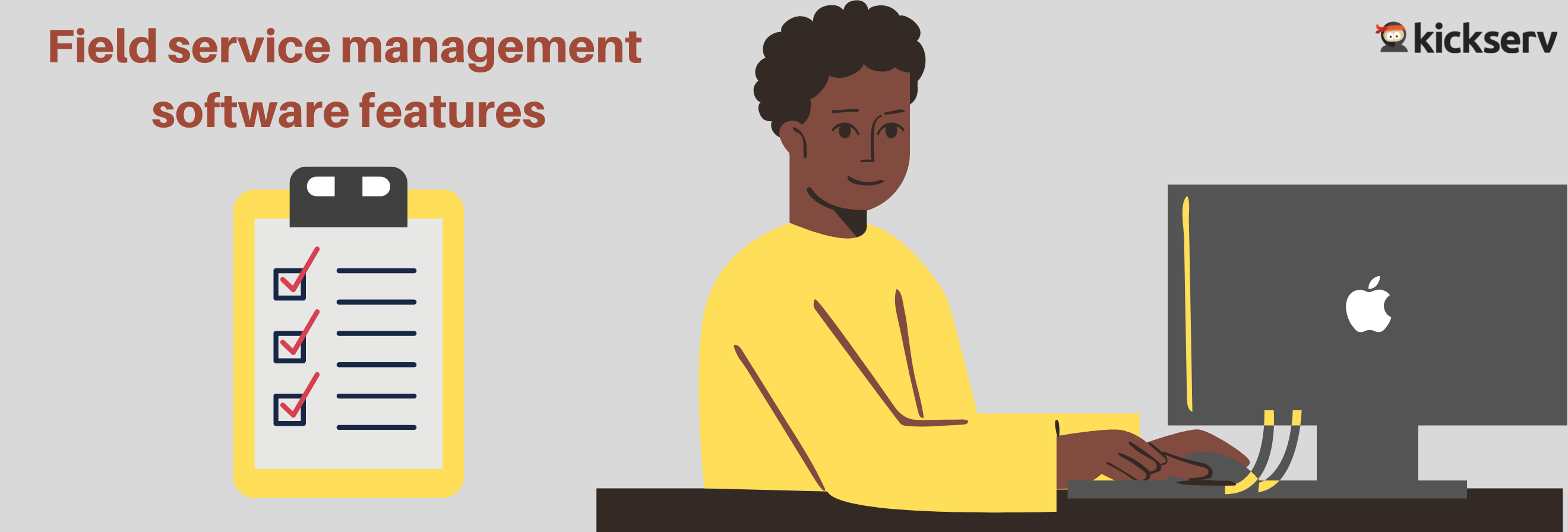
Field service management software features
Critical field service management software features
Thanks for reading the third part of our Guide for Selecting the Right Small Business Field Service Management Software. You can access our full table of contents here.
If you run a small field service business and are looking at new software, or just trying to wrangle in Excel docs and Post It notes, it's helpful to think about the challenges you are facing before you start reviewing potential field service management software.
You don't need everything in your field service management solution!
The most common mistake in buying field service management solutions is buying too many features, or picking a solution for a few specific features that won't really impact your business. What is the right way to look at this, you ask?
Try this formula to guide your field service management selection:
What's my pain + how is it costing my business + what would be the financial impact of fixing this?
Think of it this way.....
My pain is keeping track of inbound leads + it's costing me opportunity + I could increase revenue by 10-20% if I responded quicker.
Follow our worksheet to rank the pains in your field service business and help you think about what features you need.
What are the top field service features you should look for?
Before we dive into features, do you want a cloud-based system or a desktop system? It's hard to make the argument that any small business shouldn't select a cloud based software as a service (SaaS) field service solution. Your data is more secure, accessible wherever you are, and you benefit from best in-class privacy, security and redundancy standards.
#1 Lead capture and management
Field Service Management solutions should help you organize leads and respond to them faster. Typically the first one to call back wins the job. All leads from phone, email, forms, and more, route into a permission based inbox where your team, or you (from your mobile phone), can quickly respond throughout the day.
#2 Estimates
These features are critical for closing the deal. You make the appointment, inspect the job and want to quickly turn around an estimate to keep the momentum and close the deal. Take notes and turn this into an estimate you can send to the client via text or email, and track all questions and communication within the customer record.
#3 Service scheduling
Service scheduling features help coordinate employees and resources to specific clients and jobs. You can schedule employees, routes and resources in advance and employees can view their jobs, schedules and routes from a mobile field service management app.
#4 Job management
Job management features allow you or your technicians to manage all jobs in one place. Notes, job adjustments, expenses, images, client communications around a job can all be logged in the field service app.
#5 Invoicing
FSM software offers invoicing features that help manage field service sales transactions. This feature includes immediate invoicing directly from the field technician who completed the work, thus achieving a more streamlined, quicker payment cycle.
#6 Mobile service apps
Mobile field service apps help managers oversee resources in the field, while helping technicians view their jobs for the day, route to the right job, make notes and add to estimates while in the field, and even capture online payments form customers while on-site.
What are the benefits of field service software, and all these field service features? We'll explore that in another section of our guide coming soon.
What to compare vendors based on these field service management features? Visit G2's field service review site to learn more.
Never miss a post.
Get notified of new content